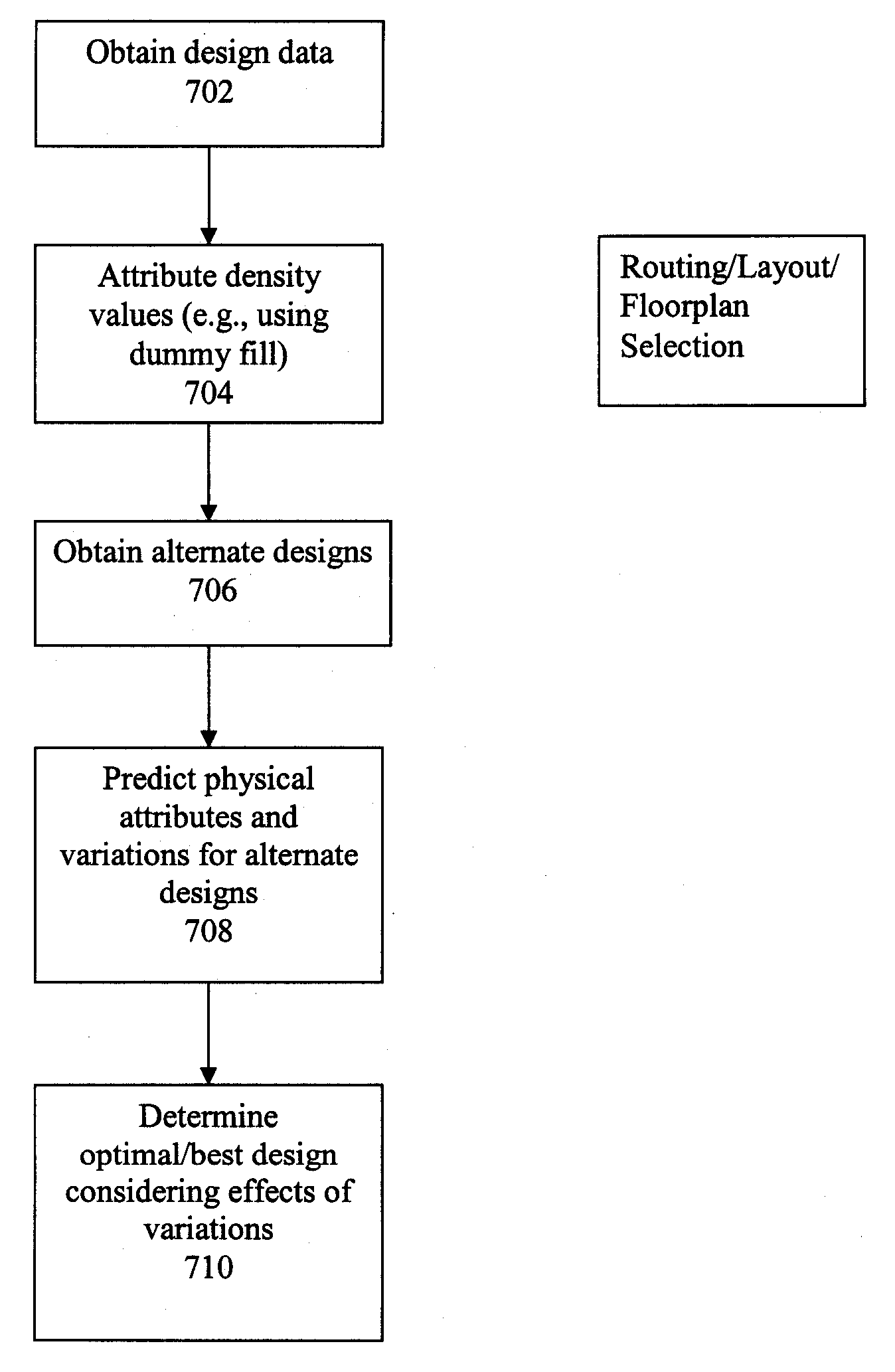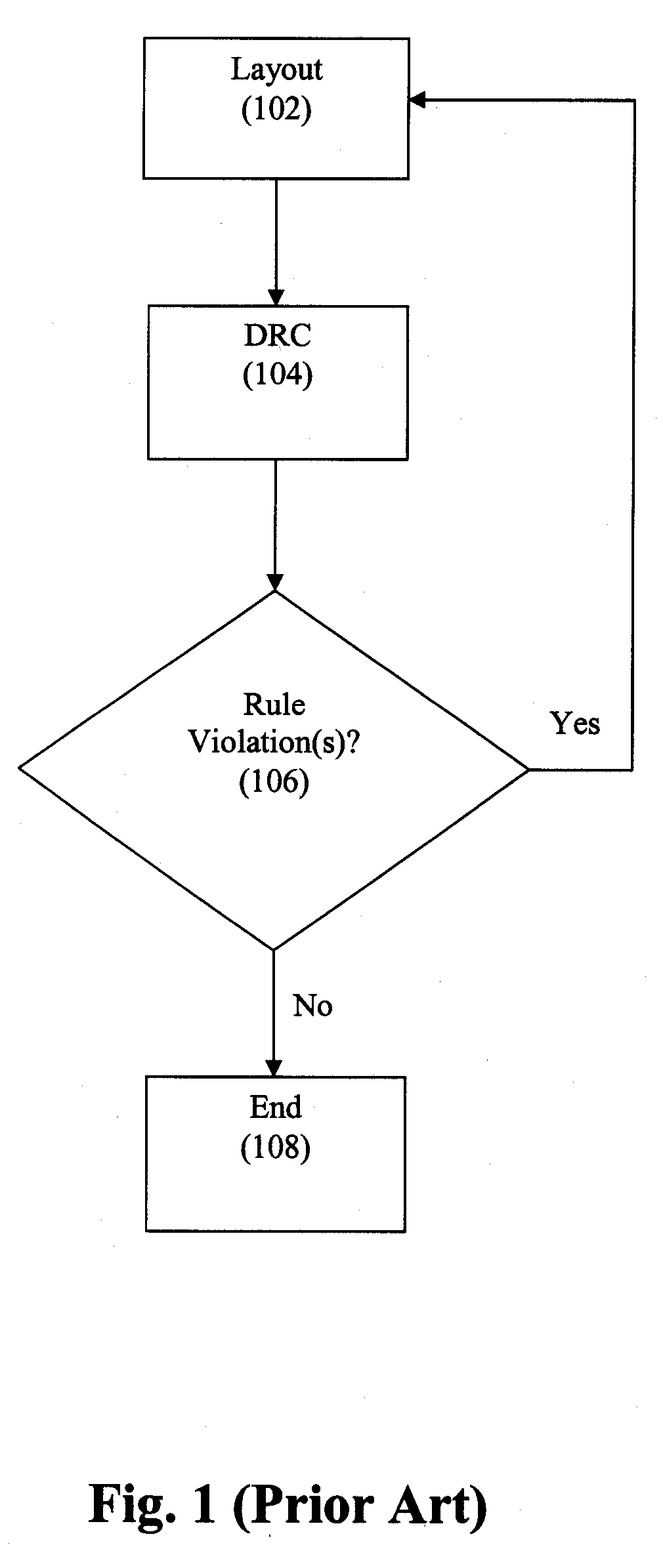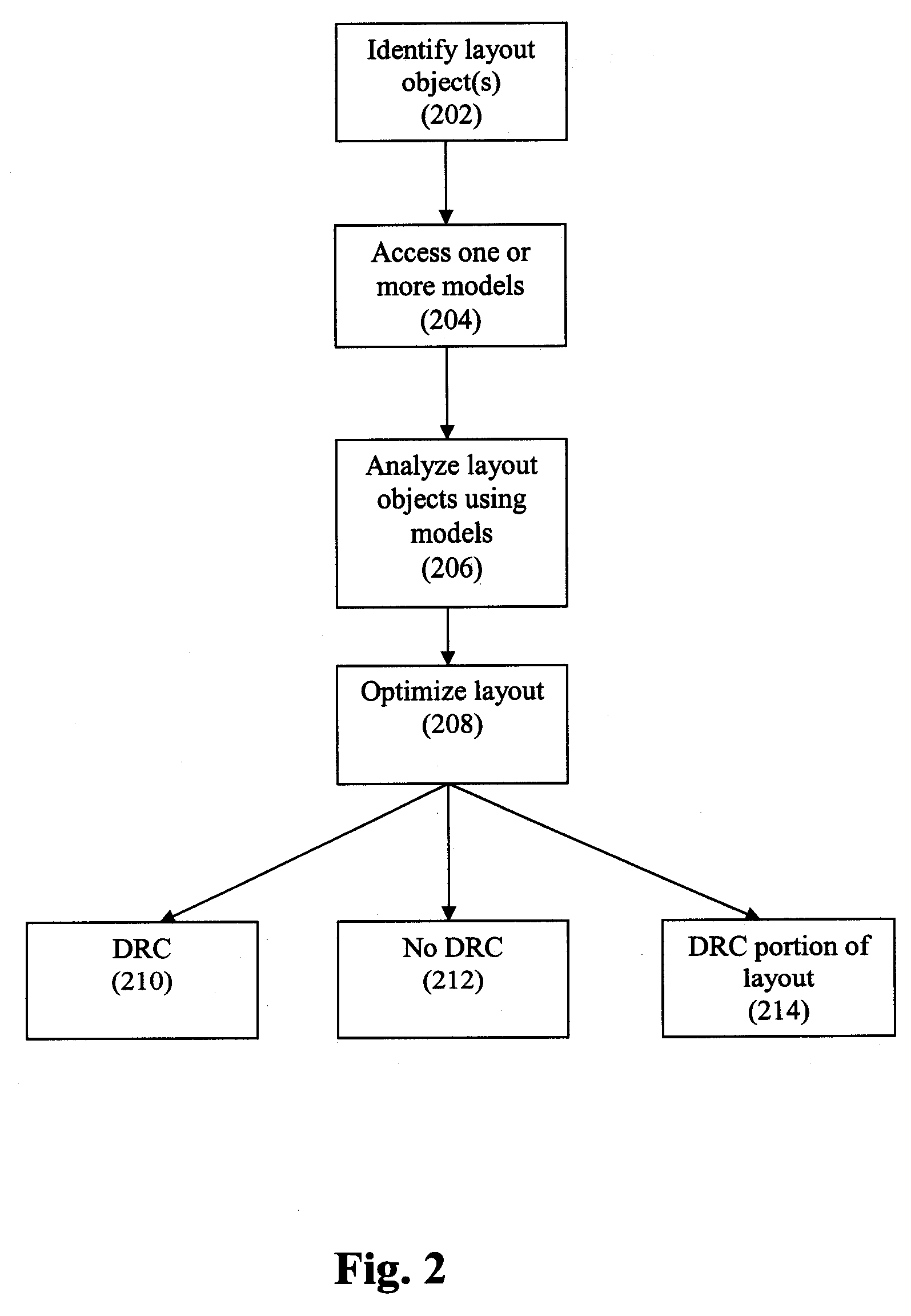Method and System for Model-Based Routing of an Integrated Circuit
a model-based routing and integrated circuit technology, applied in the field of model-based routing of integrated circuits, can solve the problems of significant thickness variation of processing films, variation of plated surface based on cmp and plating process, and large variation of post-cmp film thickness, so as to minimize the variation in surface topography, reduce the variation in deposited copper thickness, and minimize the variation in post-cmp film thickness large-range
- Summary
- Abstract
- Description
- Claims
- Application Information
AI Technical Summary
Benefits of technology
Problems solved by technology
Method used
Image
Examples
Embodiment Construction
[0027]The present approach is directed to a model-based method for floorplanning, layout, placement and routing. As used herein, the term “Model” refers to a set of data that identifies one or more specific characteristics within an IC layout and data relating to its effect, manufacturability, and / or usability. For example, a model may present a defined characteristic such as “spacing” and a chart or numeric data indicating the probability of failure / success at different spacing values.
[0028]FIG. 1 shows a flowchart of a conventional process for performing electronic design using conventional non-model approaches. Conventionally, Physical Verification (PV) is one of the final steps that is performed before releasing an IC design to manufacturing. A key component of conventional PV includes the process of Design Rule Check (DRC) to ensure that the design abides by all of the detailed rules and parameters that the foundry specifies for its manufacturing process. Violating a single fou...
PUM
 Login to View More
Login to View More Abstract
Description
Claims
Application Information
 Login to View More
Login to View More - R&D
- Intellectual Property
- Life Sciences
- Materials
- Tech Scout
- Unparalleled Data Quality
- Higher Quality Content
- 60% Fewer Hallucinations
Browse by: Latest US Patents, China's latest patents, Technical Efficacy Thesaurus, Application Domain, Technology Topic, Popular Technical Reports.
© 2025 PatSnap. All rights reserved.Legal|Privacy policy|Modern Slavery Act Transparency Statement|Sitemap|About US| Contact US: help@patsnap.com



